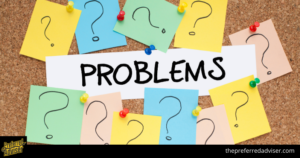Wisdom. Majority. Decision
The collective opinion of a diverse group of independent individuals is generally wiser than the opinion of a single expert.
A process that has been around for awhile, but has become more popular because of social information sites, such as Quora, Reddit, Stack Exchange, Wikipedia, Yahoo! Answers, and others that use collective human knowledge.
The phenomenon can be explained by the fact that each individual judgment is subject to its own noise, which averaging over a large number of responses can help to cancel out.
Trial by jury can be seen as similar to wisdom of the crowd, while bench trial relies on one or a few experts. In politics, sometimes sortition is an example of wisdom of the crowd.
Instead of a homogenous group, decisions would be made by a diverse group. Researchers have looked at how wisdom of the crowd effects compare to individual cognition.
A large group’s aggregated answers to questions involving quantity estimation, general world knowledge, and spatial reasoning has generally been found to be as good as, but often superior to, the answer given by any of the individuals within the group.
Essentially, jury theorems say that if each person in a group is making an independent, unbiased estimate of some quantity, then the average of all their estimates is likely to be close to the true value of the quantity.
Even though the theorems themselves are not controversial, both the assumptions and conclusions remain controversial. The oldest and simplest is Condorcet’s jury theorem.
Origin
Aristotle is credited as the first person to write about the “wisdom of the crowd” in his work Politics. In this work, he noted that the collective opinion of a group of people is often more accurate than that of any single expert.
Aristotle believes that a group of average people can collectively be better than a group of exceptional people. He compares this to a public dinner where many people contribute, which is better than a dinner provided by one person.
The average of the estimates was 1,197 pounds, quite close to the ox’s known weight of 1,198 pounds. The average estimate of the 800 people was quite close to the ox’s known weight.
Francis Galton, a statistician, noted that the median estimate of 1207 pounds was within 1% of the actual weight of 1198 pounds.
The fact that a crowd’s individual judgments can be modeled as a probability distribution with the median centered near the true value of the quantity to be estimated has contributed to the insight in cognitive science.
In recent years, the “wisdom of the crowd” phenomenon has been leveraged in business strategy and advertising spaces.
What this means is that companies are increasingly relying on the collective opinions and knowledge of the general public to make decisions about their products and services. This shift has been motivated by the fact that the internet and social media have made it easier than ever for people to share their thoughts and ideas with a wide audience.
Firms like Napkin Labs collect consumer feedback and brand impressions for clients. Meanwhile, companies like Trada use crowds to design advertisements based on clients’ requirements.
Shady areas are preferred by the golden shiner fish. A single shiner has a hard time finding shady regions in a body of water, while a large group is much more effective at finding the shade.
Higher-Dimensional Problems and Modeling
 While most research on the wisdom of the crowds has focused on estimating a single continuous quantity, the phenomenon can also be applied to higher-dimensional problems that cannot be solved using methods such as taking the mean.
While most research on the wisdom of the crowds has focused on estimating a single continuous quantity, the phenomenon can also be applied to higher-dimensional problems that cannot be solved using methods such as taking the mean.
More complex models have been developed for these purposes. A few examples of higher-dimensional problems that exhibit wisdom-of-the-crowds effects include:
Problems that involve finding the best way to combine a set of things, such as finding the shortest route between a set of points, or the cheapest way to connect a set of cities.
The aggregation methods of local decomposition and global similarity are used to break down and find solutions to problems, respectively.
can be frustrating. The frustration of ordering problems, such as the order of the U.S. presidents or world cities by population, can be frustrating.
Thurstonian modeling can be useful in this situation, where each participant has access to the true ordering of things, but there is stochastic noise that leads to differences in the final ordering given by different people.
Multi-armed bandit problems are when someone has to choose from a set of things where the rewards are not known and are fixed. The goal is to get the most return after a number of tries.
Hierarchical Bayesian models are used when there is a mixture of decision processes and individual differences in probabilities. The models include parameters for individual people that are drawn from Gaussian distributions.
The “surprisingly popular” technique was developed by scientists at MIT’s Sloan Neuroeconomics Lab in collaboration with Princeton University in order to explore ways to improve results.
If you want to know the answer to a certain question, you should ask people what they think the right answer is and what they think popular opinion will be. The averaged difference between the two will give you an indication of the correct answer.
The algorithm is “surprisingly popular” and reduces errors by 21.3 percent compared to simple majority votes and by 24.2 percent compared to basic confidence-weighted votes.
“Crowd” definition
A more general characterization refers to a group of Internet users. The term “crowd” can refer to either a group of people who are gathered together in one place or to a group of internet users. In the context of wisdom of the crowd, the term generally refers to a group of people who are gathered together in one place.
Crowds can also be useful offline. Sometimes people in a crowd are given money to participate.
There are some applications where it is required that the crowd participates, such as jury duty in the United States.
Types of Crowd Wisdom
 James Surowiecki, a writer, breaks down the advantages he sees in disorganized decisions into three main types, which he classifies as:
James Surowiecki, a writer, breaks down the advantages he sees in disorganized decisions into three main types, which he classifies as:
Cognition
- Market judgment, which he argues can be
much faster, more reliable, and less subject to political forces than the deliberations of experts, or expert committees. Coordination
- Coordination of behavior includes optimizing the utilization of a popular bar and not colliding in moving traffic flows. The book is replete with examples from
experimental economics, but this section relies more on naturally occurring experiments such as pedestrians optimizing the pavement flow, or the extent of crowding in popular restaurants. - He examines how
common understanding
within a culture allows remarkably accurate judgments about specific reactions of other members of the
culture. Cooperation
How groups of people can form networks of
without a central system controlling their behavior or directly enforcing their compliance. This section is especially pro-
Four Elements Required to Form a Wise Crowd
The wisdom of crowds only applies to certain types of situations. For example, a mob or group of crazed investors during a stock market bubble are not wise.
Refer to Failures of crowd intelligence (below) for more examples of unwise crowds. According to Surowiecki, these key criteria separate wise crowds from irrational ones:
- Diversity of opinion
- Each person should have private information even if it’s just an eccentric interpretation of the known facts.
- Independence
- People’s opinions aren’t determined by the opinions of those around them.
- Decentralization
- People are able to specialize and draw on local knowledge.
- Aggregation
- Some mechanism exists for turning private judgments into a collective decision.
Failures of Crowd Intelligence
 Surowiecki studies cases where the collective opinion of a group leads to bad judgement, and argues that in these situations, the group failed to think rationally because they were too focused on imitating and agreeing with each other, instead of thinking independently.
Surowiecki studies cases where the collective opinion of a group leads to bad judgement, and argues that in these situations, the group failed to think rationally because they were too focused on imitating and agreeing with each other, instead of thinking independently.
He argues that groups of people tend to conform to a persuasive speaker due to a flaw in the system in which decisions are made.
In other words, if the crowd is not given the opportunity to weigh in, the best case scenario is that the quality of decision making will not improve, and could potentially get worse.
Detailed case histories of such failures include:
- Too homogenous
- Surowiecki stresses the need for diversity within a crowd to ensure enough variance in approach, thought process, and private information.
- Too centralized
- The
Columbia shuttle disaster, which he blames on a hierarchical
NASA
management bureaucracy that was totally closed to the wisdom of low-level engineers. - Too divided
- The
U.S.
Intelligence community failed to prevent the
September 11, 2001 attacks
partly because information held by one subdivision was not accessible by another. - Surowiecki’s argument is that crowds (of
intelligence
analysts
in this case) work best when they choose for themselves what to work on and what information they need. (He cites the
SARS-virus isolation as an example in which the free flow of data enabled laboratories around the world to coordinate research without a central point of control.) - The
Office of the Director of National Intelligence
and the
CIA
have created a
Wikipedia
style information sharing network called
Intellipedia
that will help the free flow of information to prevent such failures again.
- Too imitative
- Where choices are visible and made in sequence, an “
information cascade” can form in which only the first few decision makers gain anything by contemplating the choices available: once this has happened it is more efficient for everyone else to simply copy those around them. - Too emotional
- Emotional factors, such as a feeling of belonging, can lead to
peer pressure,
herd instinct, and in extreme cases
collective hysteria.
Perspective And Wise Questions
 In the text, Surowiecki discusses the success of prediction markets. He explains that these markets are similar to Delphi methods but unlike opinion polls, prediction markets ask questions about what will happen in the future and are often accurate in their predictions.
In the text, Surowiecki discusses the success of prediction markets. He explains that these markets are similar to Delphi methods but unlike opinion polls, prediction markets ask questions about what will happen in the future and are often accurate in their predictions.
The question “Who will you vote for?” is not as predictive as one might think. People are more likely to give an accurate answer when they are asked about their opinion on the outcome, rather than who they will vote for. This is because the collective wisdom is usually more accurate than any one person’s opinion.
Applications
Surowiecki is a very strong advocate of the benefits of decision markets, and regrets the failure of DARPA’s controversial Policy Analysis Market to get off the ground. It is a great shame that something with so much potential failed due to public backlash.
He argues that the success of public and internal corporate markets is due to the fact that a group of individuals with different opinions but the same goal (to make a good estimate) can produce a reliable overall prediction.
In Surowiecki’s opinion, collective predictions are more accurate than those of any single think tank. He argues in favor of expanding current futures markets to cover areas such as terrorist activity, as well as creating prediction markets within individual businesses.
To support his argument, the author gives the example of his publisher who is able to publish more interesting books by working with individual authors on one-time contracts.
This allows them to take advantage of the knowledge of a larger group of people than they would be able to if they only had an internal team of writers.
Hutton believes that Surowiecki’s theory can be applied to opinions as well as facts. He argues that when a group of people make a decision together, it is often a good decision even though each individual might not have come to the same conclusion on their own.
The author’s conclusion is that a diverse and democratic society with an independent press is preferable to any other type of society.
Wisdom of crowds effect can be applied in three ways: Prediction markets, Delphi methods, and extensions of traditional opinion polls.
A prediction market is a market where people can bet on the outcome of an event. The most common type of prediction market is a speculative market, where people bet on the outcome of an event that has not yet happened. For example, people might bet on who will win an election. In a prediction market, the assets are cash values that are tied to specific outcomes.
NewsFutures is an international market that allows people to bet on the probability of future events.
InnovateUs predicts market potential for new ideas by taking into account the consensus of employees.

0 comments